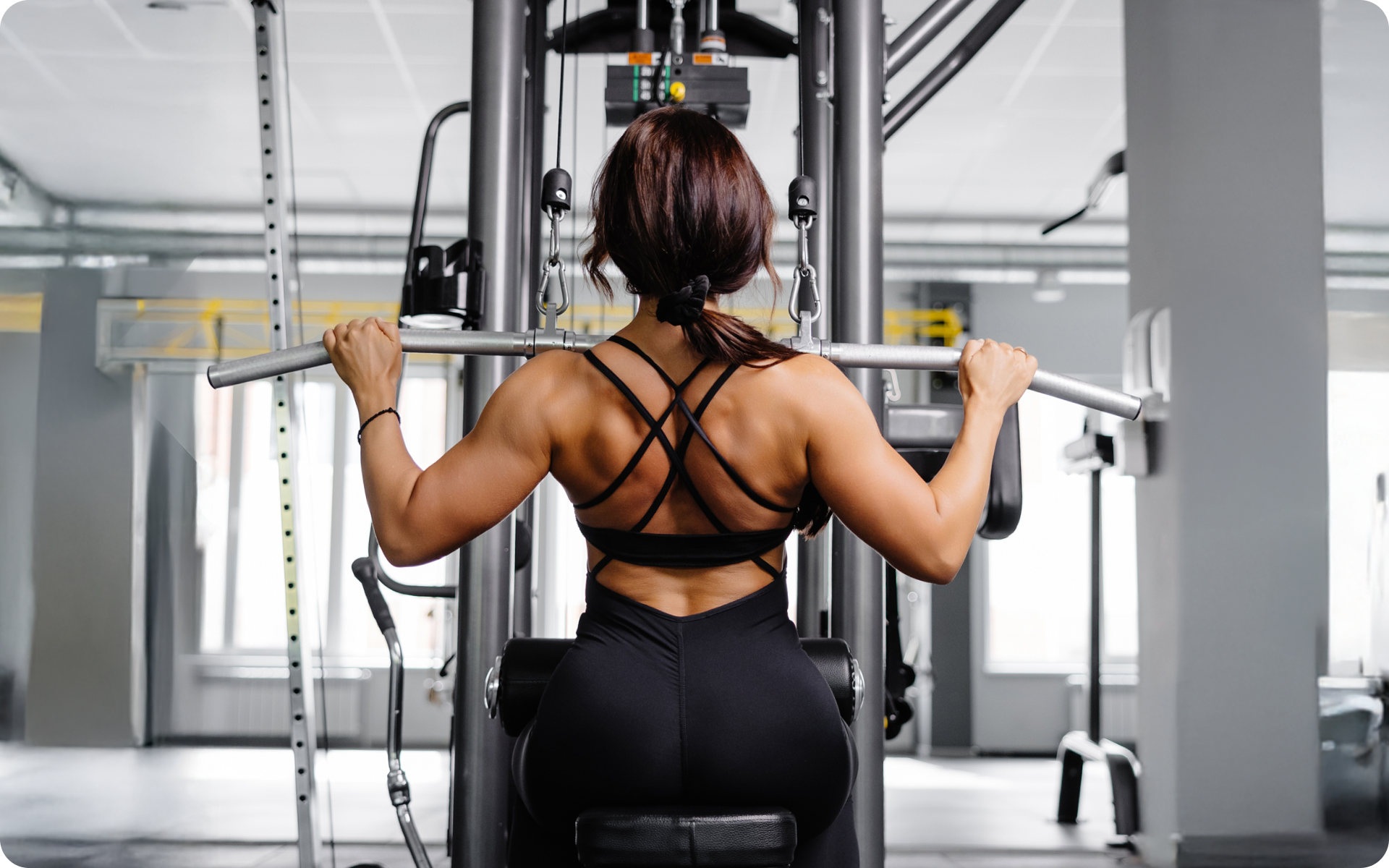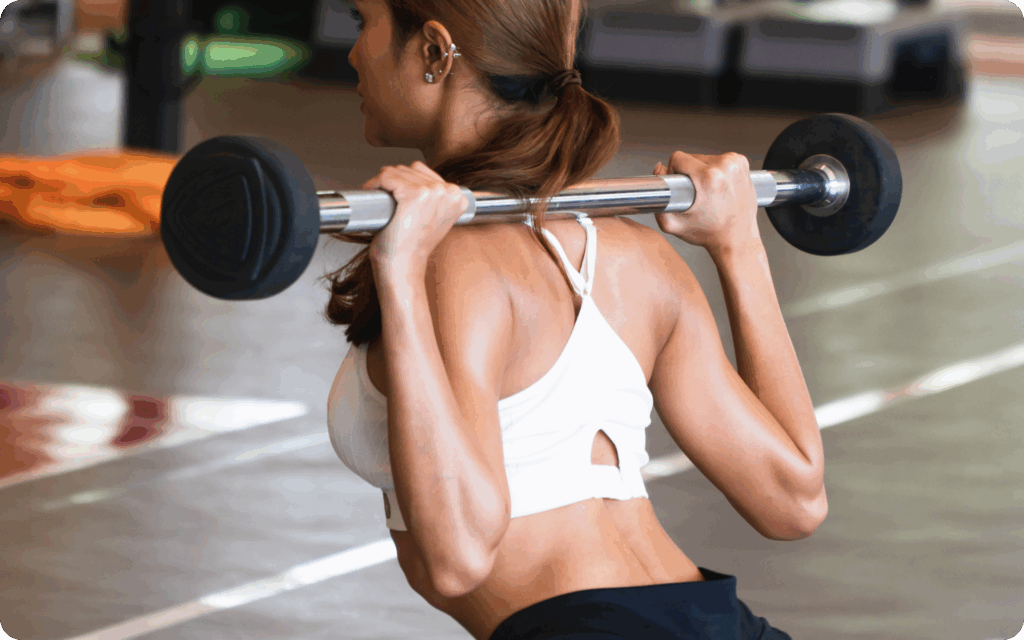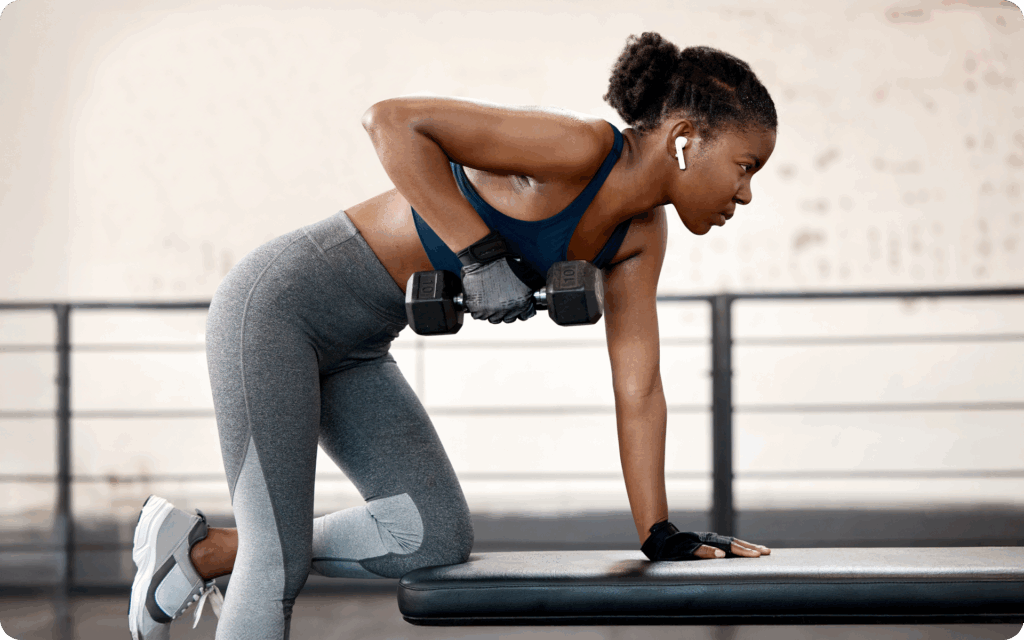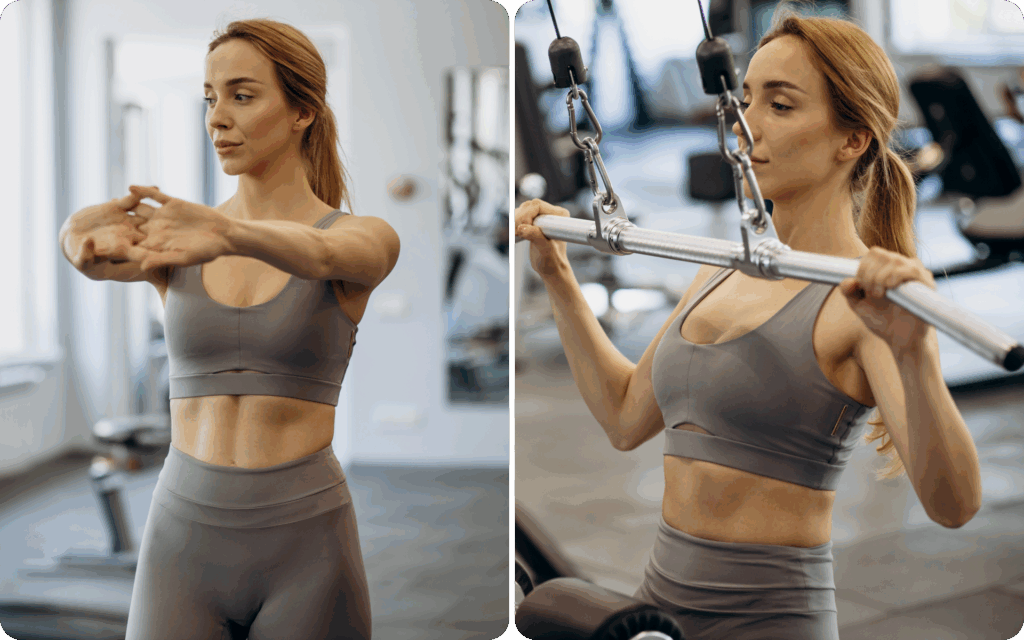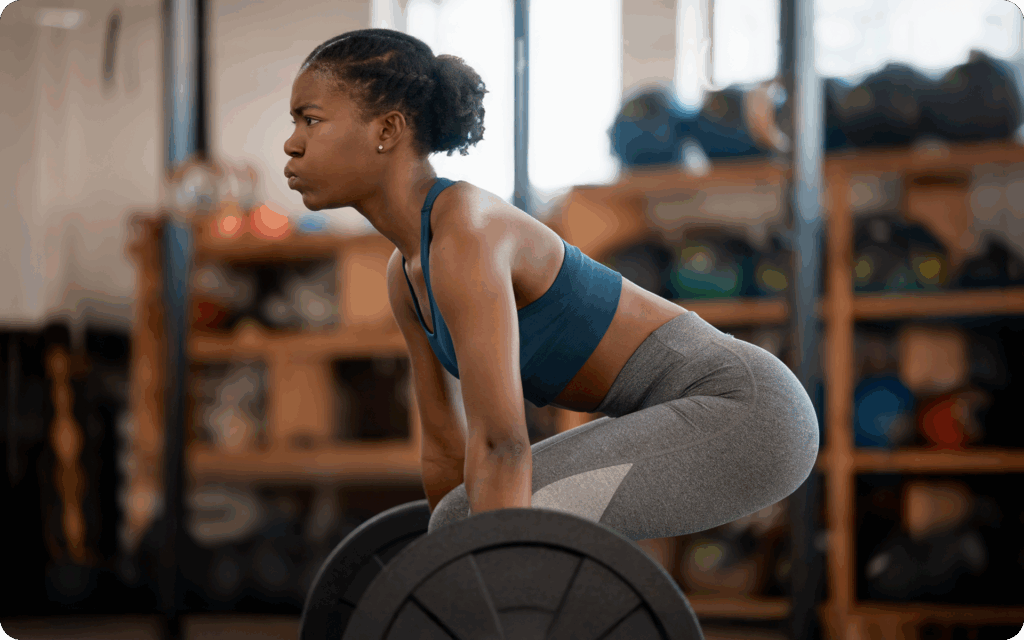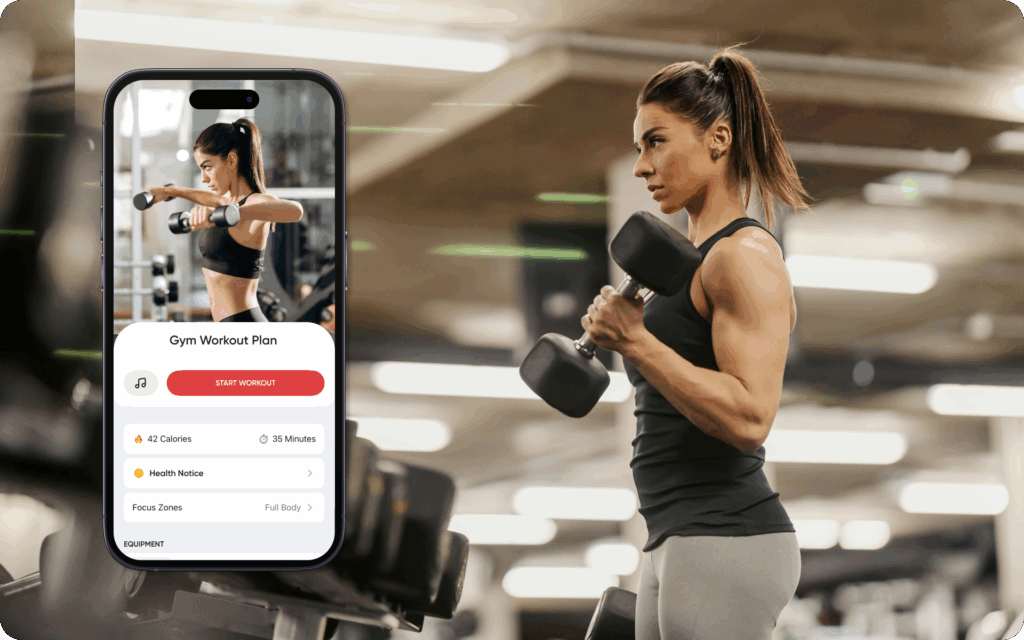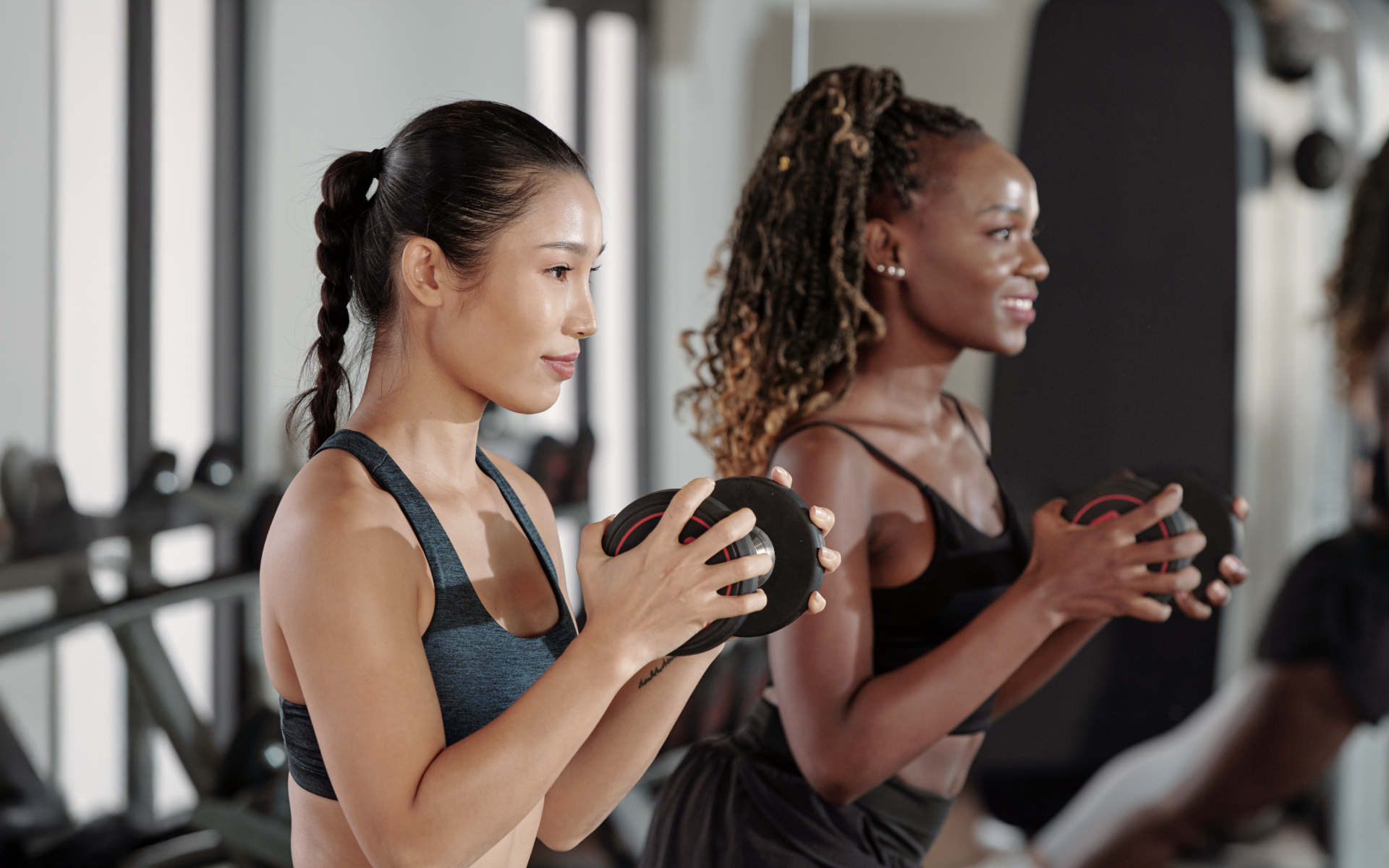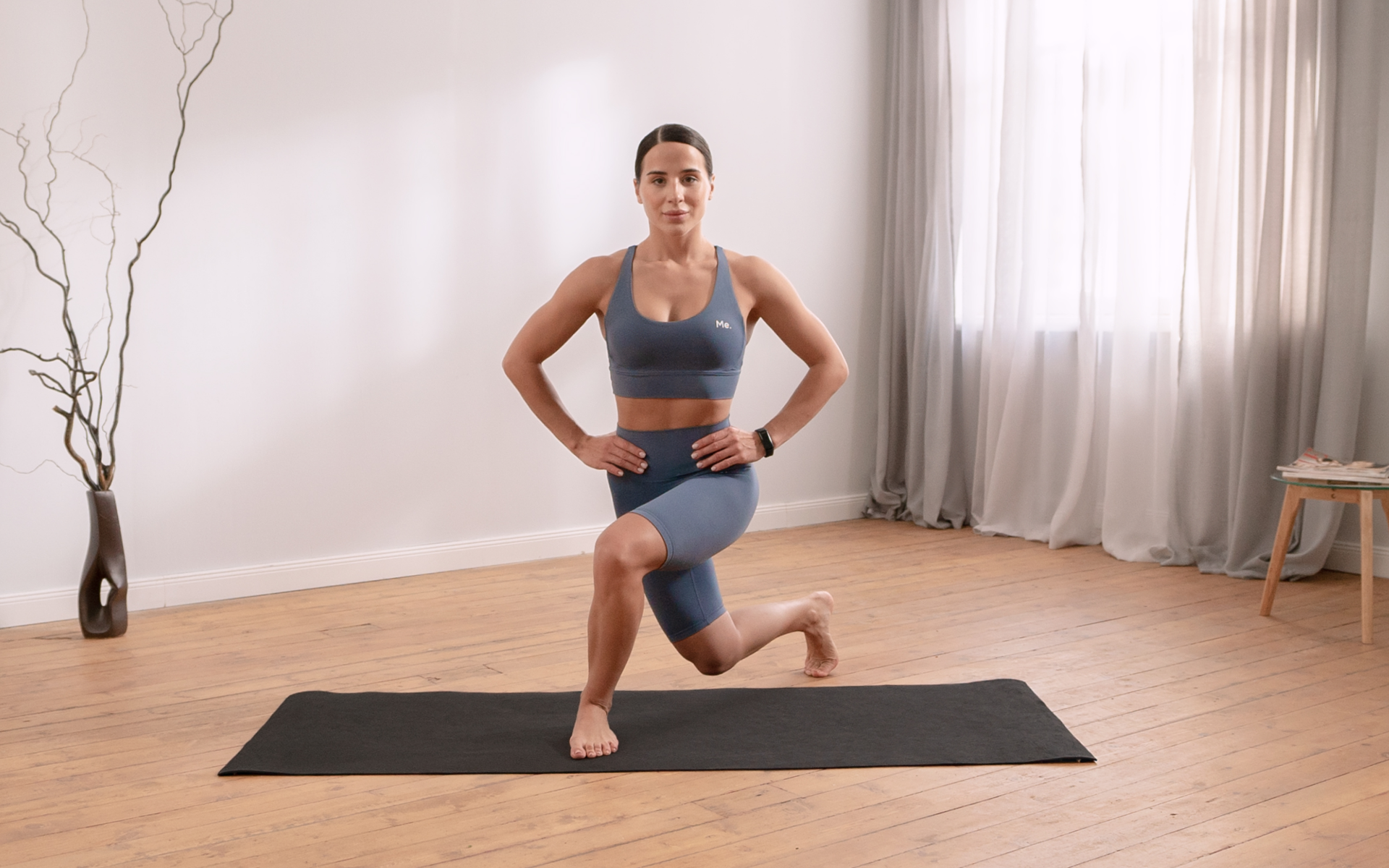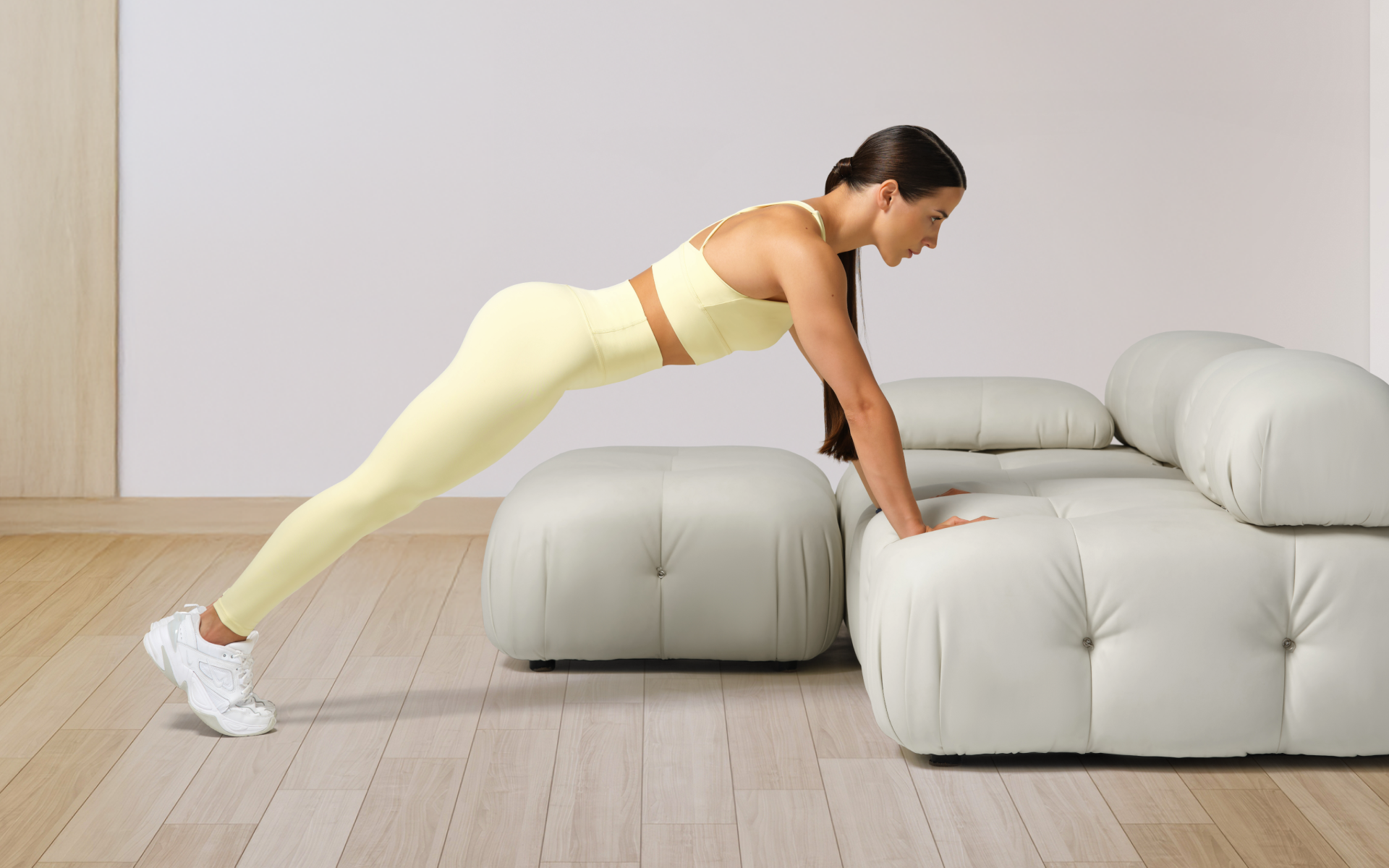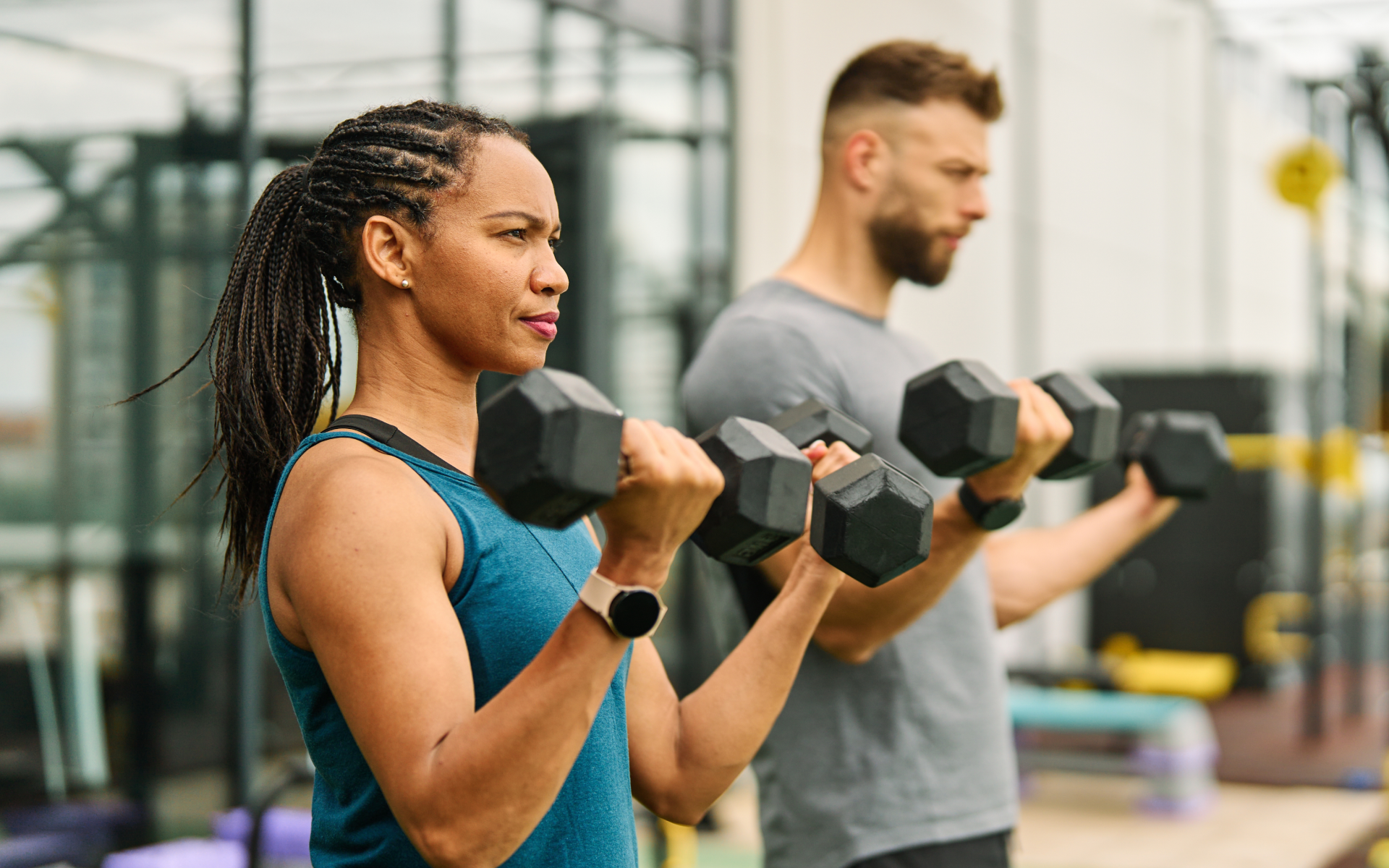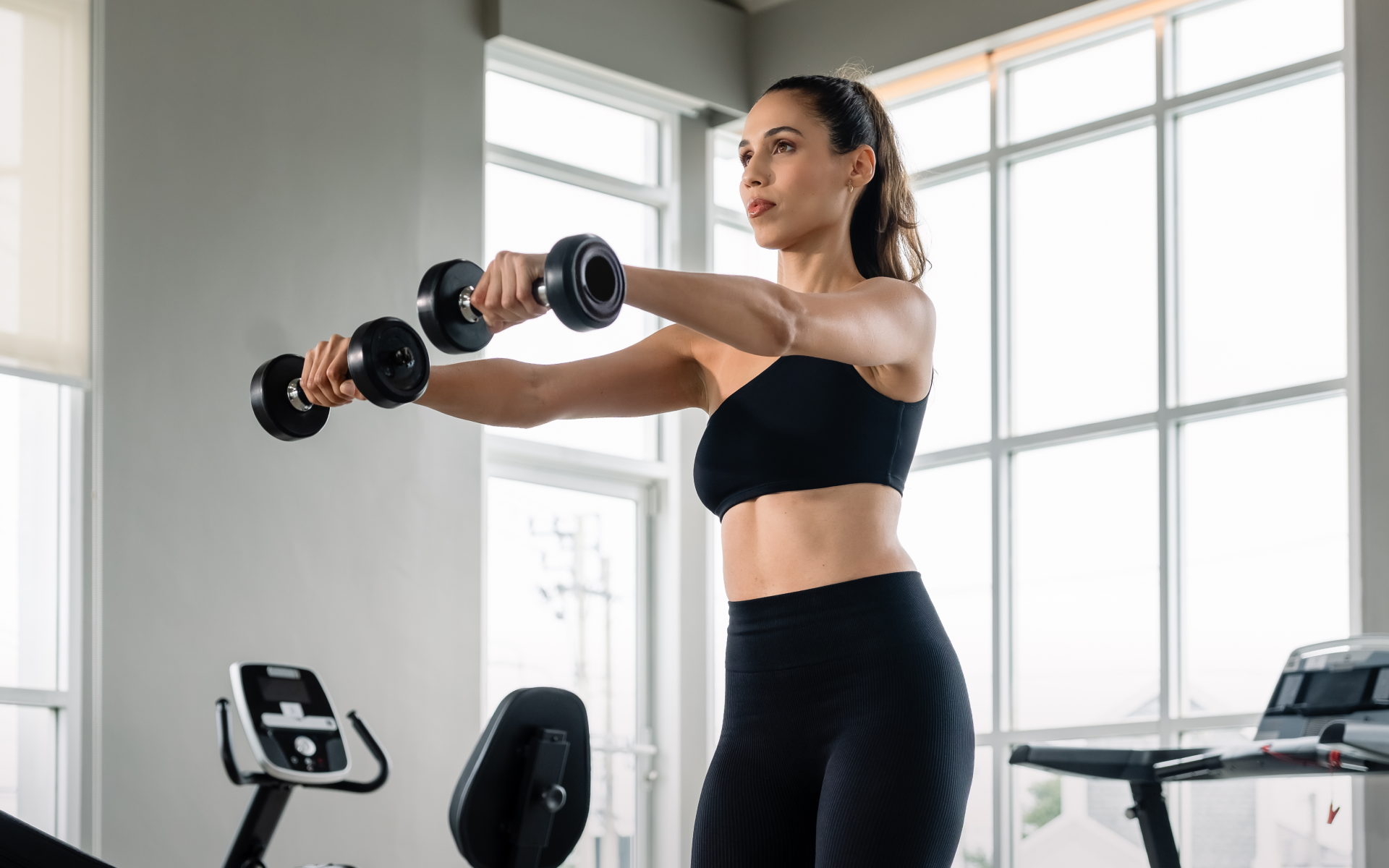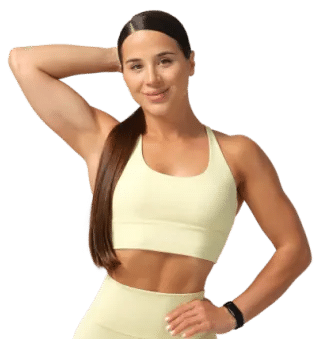Split training is a common way of structuring gym workouts. This method allows you to focus on specific areas of the body during each session, ensuring each muscle group gets the attention it needs to grow stronger, recover properly, and perform optimally.
For beginners, this approach simplifies the often overwhelming world of fitness and lays the foundation for long-term progress and injury prevention.
Today, we’ll be diving into a beginner-friendly shoulder and back workout that is designed for the gym. These two muscle groups play a crucial role in both strength and posture, which makes them essential for anyone who is looking to improve their overall fitness.
What Can I Combine Shoulder Workouts With?
When designing a workout split, the shoulder muscles, which include the deltoids (anterior, lateral, and posterior), are highly versatile and can be paired with several other muscle groups. The choice of combination depends on your training goals, recovery capacity, and overall program structure.
1. Shoulders and Chest
Pairing shoulders with chest is a common approach as both muscle groups are involved in pushing movements. Exercises such as bench presses and push-ups recruit the anterior deltoid as a secondary muscle (1), which makes it logical to train them together.
This combination allows you to focus on upper-body pushing strength in a single session. However, it’s important to avoid overloading the anterior deltoid as it can lead to fatigue or imbalances if it’s not balanced with posterior chain work.
2. Shoulders and Arms
Another effective pairing is shoulders with arms (biceps and triceps). This combination works well for those who prefer shorter, more focused sessions targeting smaller muscle groups.
For example, you can structure the workout to include compound shoulder exercises like overhead presses, followed by isolation movements for the biceps and triceps. This pairing minimizes overlap with other major muscle groups, allowing for better recovery.
3. Shoulders and Legs
While less common, combining shoulders with legs can be a strategic choice for those on a full-body or upper-lower split. This pairing works well for athletes or individuals who want to distribute their training volume evenly across the week.
For instance, you might perform squats or lunges for the lower body, followed by overhead presses or lateral raises for the shoulders. This approach ensures that no single muscle group is overworked in consecutive sessions.
4. Shoulders and Back
Pairing shoulders with back is less conventional but can be effective for balancing pushing and pulling movements. The posterior deltoid, which is part of the shoulder complex, plays a significant role in pulling exercises like rows and pull-ups.
Training these muscle groups together can enhance posture and upper-body symmetry, provided the workout is structured to avoid excessive fatigue. If you’re curious about back exercises for women, check out our earlier article.
Read more: Shoulder Dumbbell Workout: 6 Exercises to Help You Build Muscle
Can I Do Shoulder and Back Workouts Together?
Yes, training shoulders and back together can be highly beneficial when done correctly. This combination leverages the complementary roles of these muscle groups in upper-body movement and posture.
Complementary Muscle Functions
The back muscles (latissimus dorsi, trapezius, rhomboids, and erector spinae) are primarily responsible for pulling movements (2), while the shoulders handle a mix of pushing and pulling, depending on the deltoid head that is being targeted. For example:
- The posterior deltoid assists in pulling exercises such as rows and face pulls.
- The trapezius, part of the back, supports shoulder stability during overhead movements.
By training these groups together, you can create a balanced workout that targets both pushing and pulling mechanics, improving overall upper-body strength and posture.
BetterMe will shake off your mental funk, rid you of your energy-zapping habits, and help you sculpt the body of your dreams. Intrigued? Hurry up and change your life for the better!
Postural Benefits
Combining shoulders and back in a single session is particularly effective for addressing postural imbalances. Many individuals have overdeveloped anterior deltoids and underdeveloped posterior deltoids and upper back muscles due to a lifestyle dominated by forward-oriented activities (e.g. sitting, typing). Including exercises such as face pulls, reverse flyes, and rows alongside shoulder presses and lateral raises can help correct these imbalances.
Efficient Use of Time
For those with limited time to train, combining shoulders and back allows for a comprehensive upper-body workout in a single session. Alternating between pushing (shoulder) and pulling (back) exercises can also reduce fatigue, as one muscle group rests while the other works. For example:
- Perform a set of overhead presses (shoulders), followed by a set of pull-ups (back).
- Alternate between lateral raises and bent-over rows.
This method saves time and maintains intensity throughout the workout.
What Are Some Powerful Back and Shoulder Exercises?
1. Overhead Press (Shoulders)
The overhead press is a compound movement that primarily targets the deltoids, with secondary activation of the triceps and upper trapezius (3). It mimics functional pushing movements and improves shoulder stability and strength. The exercise also engages the core to maintain balance and posture during the lift.
Steps to Perform:
- Stand with your feet shoulder-width apart, holding a barbell or dumbbells at shoulder height with your palms facing forward.
- Engage your core and keep your back straight.
- Press the weight overhead in a controlled motion until your arms are fully extended.
- Slowly lower the weight back to the starting position.
- Repeat for the desired number of reps.
2. Pull-Ups (Back)
Pull-ups are a bodyweight exercise that primarily targets the latissimus dorsi, with assistance from the biceps, rhomboids, and trapezius (4). This vertical pulling movement enhances upper-body strength and improves grip and scapular stability.
Steps to Perform:
- Grip a pull-up bar with your palms facing away (overhand grip) and your hands slightly wider than shoulder-width apart.
- Hang with your arms fully extended and engage your core.
- Pull your chest toward the bar by squeezing your shoulder blades together and driving your elbows down.
- Lower yourself back to the starting position in a controlled manner.
- Repeat for the desired number of reps.
3. Face Pulls (Shoulders and Upper Back)
Face pulls target the posterior deltoids, rhomboids, and trapezius, which makes them an excellent exercise for improving posture and shoulder health. They emphasize scapular retraction and external rotation, which are often neglected in traditional training (5).
Steps to Perform:
- Attach a rope handle to a cable machine at chest height.
- Grip the rope with both hands, palms facing each other, and step back to create tension.
- Pull the rope toward your face, keeping your elbows high and squeezing your shoulder blades together.
- Slowly return to the starting position.
- Repeat for the desired number of reps.
4. Bent-Over Rows (Back)
Bent-over rows are a compound exercise that targets the lats, rhomboids, and traps, with secondary activation of the biceps and lower back (6). This horizontal pulling movement builds upper-back strength and improves posture.
Steps to Perform:
- Hold a barbell or dumbbells with an overhand grip, and hinge at the hips until your torso is nearly parallel to the floor.
- Keep your back straight and core engaged.
- Pull the weight toward your lower ribcage by squeezing your shoulder blades together.
- Lower the weight back to the starting position in a controlled manner.
- Repeat for the desired number of reps.
Reasons why BetterMe is a safe bet: a wide range of calorie-blasting workouts, finger-licking recipes, 24/7 support, challenges that’ll keep you on your best game, and that just scratches the surface! Start using our app and watch the magic happen.
5. Lateral Raises (Shoulders)
Lateral raises isolate the lateral deltoids, which are responsible for shoulder abduction. This exercise helps create the appearance of broader shoulders and improves shoulder stability (7).
Steps to Perform:
- Hold a dumbbell in each hand with your arms at your sides and your palms facing inward.
- Stand tall with a slight bend in your elbows.
- Raise the dumbbells out to the sides until they reach shoulder height.
- Slowly lower the dumbbells back to the starting position.
- Repeat for the desired number of reps.
6. Deadlifts (Back and Posterior Chain)
Deadlifts are a full-body exercise that primarily targets the erector spinae, glutes, and hamstrings, with secondary activation of the lats and traps (8). This movement builds overall strength and reinforces proper hip hinge mechanics.
Steps to Perform:
- Stand with your feet hip-width apart and the barbell over your midfoot.
- Hinge at the hips and grip the barbell with your hands just outside your knees.
- Engage your core, keep your back straight, and drive through your heels to lift the barbell.
- Stand tall at the top, then lower the barbell back to the floor in a controlled manner.
- Repeat for the desired number of reps.
- Repeat for the desired number of reps.
7. Reverse Flyes (Shoulders and Upper Back)
Reverse flyes target the posterior deltoids and rhomboids, which makes them an excellent accessory exercise for improving shoulder stability and posture. They also help counteract the effects of forward-rounded shoulders (9).
Steps to Perform:
- Hold a dumbbell in each hand and hinge at the hips until your torso is nearly parallel to the floor.
- Keep a slight bend in your elbows and let the dumbbells hang below your shoulders.
- Raise the dumbbells out to the sides in a wide arc, squeezing your shoulder blades together.
- Slowly lower the dumbbells back to the starting position.
- Repeat for the desired number of reps.
Read more: How to Make Your Forearms Bigger: Effective Forearm Workouts
What Is the Best Shoulder and Back Workout Combo?
This program balances pushing and pulling movements, targets all heads of the deltoids, and strengthens the upper and lower back. Adjust weights and rest periods based on your fitness level and goals:
- Pull-ups – 3 sets of 8-12 reps (use assistance if needed)
- Deadlifts – 3 sets of 6-8 reps
- Bent-over rows – 3 sets of 8-10 reps
- Overhead press – 3 sets of 8-10 reps
- Face pulls – 3 sets of 12-15 reps
- Lateral raises – 3 sets of 12-15 reps
- Reverse flyes – 3 sets of 12-15 reps
Yes, back and shoulders make a good split because they complement each other biomechanically. The back focuses on pulling movements, while the shoulders involve both pushing and pulling, particularly the posterior deltoid. This pairing allows for balanced upper-body development and efficient use of training time. The shoulders are involved in both push and pull movements, depending on the deltoid head being targeted. The anterior and lateral deltoids are primarily engaged in pushing exercises (e.g., overhead press), while the posterior deltoid is activated during pulling movements (e.g., face pulls or rows). The triceps are a pushing muscle group. They are responsible for elbow extension and are heavily involved in pushing exercises like bench presses, overhead presses, and tricep dips. Smaller muscle groups like the calves, forearms, and abs can be trained daily due to their high endurance capacity and frequent use in daily activities. Even with these muscle groups, it is still not recommended to train them daily through isolation movements. These muscles are involved in many different lifts as a secondary or tertiary muscle but even with their high endurance capacity it would not be recommended to isolate them daily. Always remember that larger muscle groups like the back, shoulders, and legs require more recovery time and should not be trained every day to avoid overtraining and injury.Frequently Asked Questions
Is back and shoulders a good split?
Is shoulder push or pull?
Is the tricep a push or pull muscle?
What muscles can you train every day?
The Bottom Line
A well-structured shoulder and back workout gym for females routine is essential for building strength, improving posture, and achieving balanced upper-body development. By pairing complementary muscle groups, you can train smarter, reduce the risk of injury, and maximize your results. Try the program we’ve shared above or adjust it to your fitness level and preferences.
DISCLAIMER:
This article is intended for general informational purposes only and does not serve to address individual circumstances. It is not a substitute for professional advice or help and should not be relied on for making any kind of decision-making. Any action taken as a direct or indirect result of the information in this article is entirely at your own risk and is your sole responsibility.
BetterMe, its content staff, and its medical advisors accept no responsibility for inaccuracies, errors, misstatements, inconsistencies, or omissions and specifically disclaim any liability, loss or risk, personal, professional or otherwise, which may be incurred as a consequence, directly or indirectly, of the use and/or application of any content.
You should always seek the advice of your physician or other qualified health provider with any questions you may have regarding a medical condition or your specific situation. Never disregard professional medical advice or delay seeking it because of BetterMe content. If you suspect or think you may have a medical emergency, call your doctor.
SOURCES:
- SHOULDER KINEMATICS DURING THE PUSH-UP PLUS EXERCISE (2011, pmc.ncbi.nlm.nih.gov)
- Back Muscles (n.d., physio-pedia.com)
- Front vs Back and Barbell vs Machine Overhead Press: An Electromyographic Analysis and Implications For Resistance Training (2022, frontiersin.org)
- Electromyographic analysis of muscle activation during pull-up variations (2017, sciencedirect.com)
- Effects of pulling direction on upper trapezius and rhomboid muscle activity (2017, pmc.ncbi.nlm.nih.gov)
- The Effect of Performing Bi- and Unilateral Row Exercises on Core Muscle Activation (2015, pubmed.ncbi.nlm.nih.gov)
- An Electromyographic Analysis of Lateral Raise Variations and Frontal Raise in Competitive Bodybuilders (2020, mdpi.com)
- Electromyographic activity in deadlift exercise and its variants. A systematic review (2020, pmc.ncbi.nlm.nih.gov)
- Effect of Hand Position on EMG Activity of the Posterior Shoulder Musculature During a Horizontal Abduction Exercise (2013, journals.lww.com)
